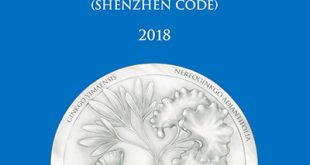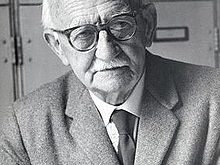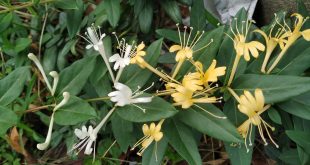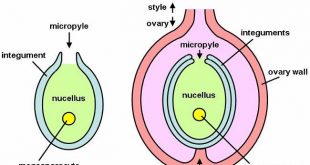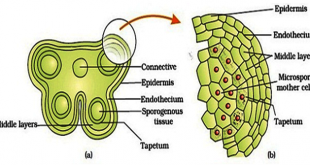DIVISION I PRINCIPLES PRINCIPLE I The nomenclature of algae, fungi, and plants is independent of zoological and prokaryotic nomenclature. This Code applies equally to names of taxonomic groups treated as algae, fungi, or plants, whether or not these groups were originally so treated. PRINCIPLE II The application of names of taxonomic …
Read More »Introduction to ICN & Preamble of Two Codes
The International Code of Nomenclature for algae, fungi, and plants (ICN) is the set of rules and recommendations dealing with the formal botanical names that are given to plants, fungi and a few other groups of organisms, all those “traditionally treated as algae, fungi, or plants”. It was formerly called …
Read More »Cronquist’s System of Classification
Arthur Cronquist was the Senior Curator of New York Botanic Garden and Adjunct Professor of Columbia University. He presented an elaborate interpretation of his concept of classification in The Evolution and Classification of Flowering Plants (1968), The further edition of his classification was published in “An Integrated System of Classification …
Read More »Phylogenetic Classification of John Hutchinson
John Hutchinson was a British botanist associated with Royal Botanic Gardens, Kew, England. He developed and proposed his system based on Bentham and Hooker and also on Bessey. His phylogenetic system first appeared as “The Families of Flowering Plants in two volumes. The first volume contains Dicotyledons (published in 1926) …
Read More »Takhtajan’s System of Classification
Present-day Armenian-born botanist & systematist Armen Leonovich Takhtajan (1910-2009) was one of the most influential figures of 20th century in the field of plant evolution, systematics, and biogeography. His other interests included morphology of flowering plants, paleobotany, and the flora of the Caucasus (region between the Black sea & the Caspian sea). Good to know …
Read More »উদ্ভিদপ্রেমীদের চোখে কার্জনহল দেখতে যেমন
ঢাকা বিশ্ববিদ্যালয়ের উদ্ভিদবিজ্ঞানের ছাত্রছাত্রীদের গাছের নাম জানা শুরু হয় কার্জনের গাছ দেখেই। কত হরেক রকম গাছ আছে আমাদের এই কার্জনে, আর উদ্ভিদবিজ্ঞানের বাগানে ঢুকলে তো কথাই নেই। তবুও বাস্তবতা হচ্ছে চোখের সামনের অধ্যয়নের বিষয় থাকলেও চার বছর ধরে দেখা এই গাছগুলোর নাম জিজ্ঞেস করা হলে হয়তো আমাদের উদ্ভিদবিজ্ঞানেরই অনেক ছাত্র …
Read More »উদ্ভিদের সাথে পরিচিতিঃ মধু লনিসেরা Lonicera japonica
আমাদের গল্পের জায়গায়, কার্জনহলের মেহগনি গাছের নিচে যখন বসতাম আশে পাশের গাছগুলো মুগ্ধ করতো আজো মুগ্ধ করে বলেই সেখানে বসা। সেখানে প্লাস্টারকরা বোর্ডের পাশেই মাটিতে লতানো একটা অচেনা উদ্ভিদ ছিলো। একদিন আমি আর আমার বন্দ্ধ শামীম বসে ছিলাম। এইদিক ঐদিক দেখতে দেখেতেই হঠাৎ সেদিকে নজর পড়লো তাই কি ধরনের উদ্ভিদ, …
Read More »গাছকে আমরা কতটুকু জানি ?
মানুষ সৃষ্টির শ্রেষ্ঠ জীব কিন্তু আশ্চর্যজনক হলেও সত্য যে এই শ্রেষ্ঠ জীবনটিই প্রত্যক্ষ বা পরোক্ষভাবে উদ্ভিদের উপর নির্ভরশীল। আমাদের চারপাশের পরিবেশে দৃষ্টিপাত করলে দেখতে পাব যে, কতই না বিচিত্র আমাদের চারপাশের প্রানিকুল। মানুষের কথাই ভাবি, কেউ কেউ কটূক্তি করলে বা আঘাত করলে আমরা প্রতিশোধপরায়ণ হয়ে যাই কিন্তু গাছ? আপনার …
Read More »The Megasporangium: Types, Parts and Functions
Megasporangium is the structure of a plant body that contains a female reproductive organ. It can be called an ovule. It consists of nucellus and integument. The ovule can be formed in different sizes and shapes. Many times it changes its form during the course of its development. Mature …
Read More »The Microsporangium & the Male Gametophyte
Microsporangium: The sporangium that is connected with the production of microspores (pollen grains) eventually development of male gametophyte is known as microsporangium. Microsporangia are produced on stamen where each stamen has a bilobed anther (each lobe has two microsporangia), connective and anther filament. When anther produces four elongated microsporangia, the …
Read More » Plantlet The Blogging Platform of Department of Botany, University of Dhaka
Plantlet The Blogging Platform of Department of Botany, University of Dhaka
